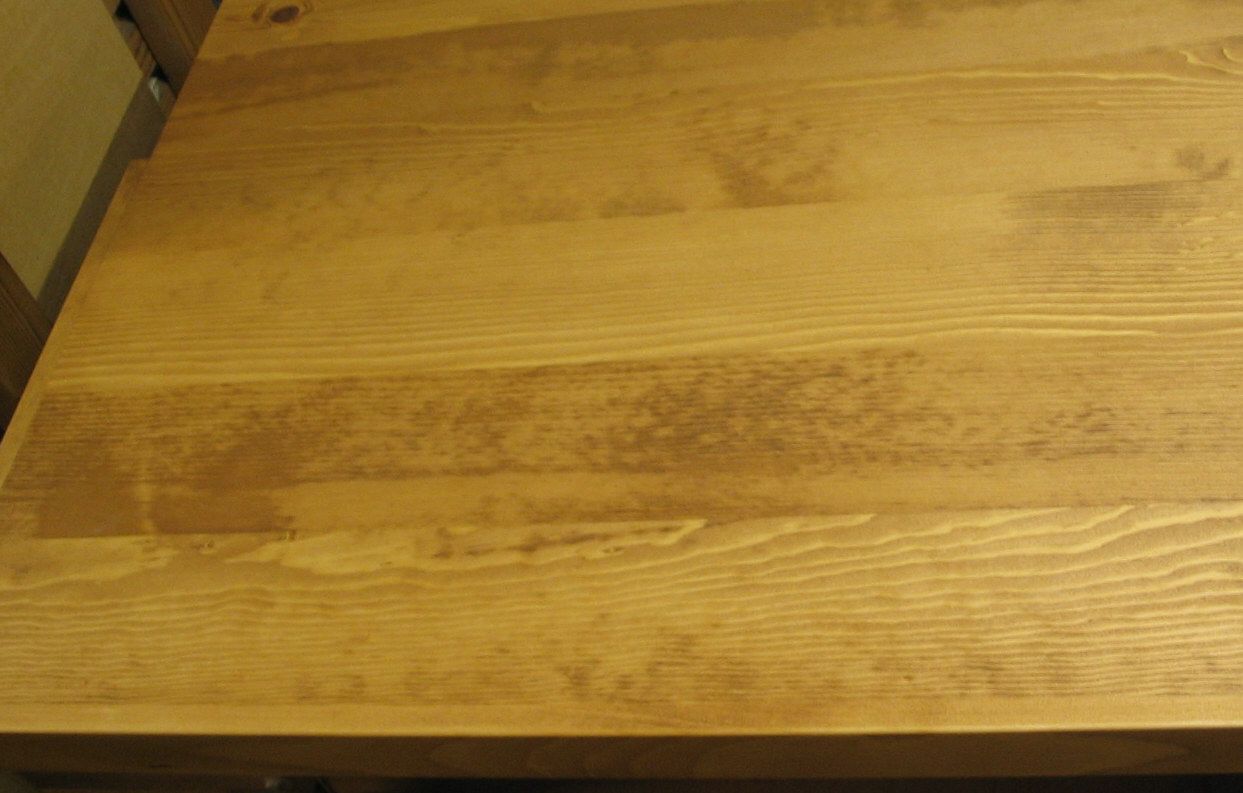Question
I haven't stained pine in a long time. The doors I finished came out nice and even color-wise. But the desk top which is solid glued up and 30" x 100" had some nasty splotches. I had toned the wood with clear stain base, then immediately applied wiping stain. Naturally my luck ran out, and it looked terrible. This customer likes pine, but I know she would not like this.
I have sanded it back to bare wood and am considering a gel stain, but have only used them once. Hopefully I can mix the colors to match the rest of the project. But can I spray precat lacquer over gel? I tried a wash coat with the wiping stain and it still got dark streaks in spots.
Forum Responses
(Finishing Forum)
From contributor A:
Your first mistake was not letting the clear stain base set up, or cure, after you applied it. Conditioner has to cure to be effective. Just like applying clear stain base, conditioner is a wipe/brush on washcoat, that's all. In order for you to size the wood, the application of stain base has to be cured before you can proceed with your coloring. I would be taking 3 parts Huls 824 or 844 colorant, to 20 parts lacquer thinner, and spraying on a light but wet coat. Let it dry. It takes only minutes, and then you can begin sealing and/or topcoating. You can apply precat over gel stain as long as the stain is cured dry. Read the directions of the gel stain and see what its dry time is. If you apply the toner that I suggest and do it right, you will have all the clarity you need with none of the blotching.
As you can see from the picture this pine is temperamental. After 90 minutes of sanding it down, I want to get it right this time. The upper left corner will be under a hutch so I can test the actual wood being used, but I'm not clear on your procedure and don't want to guess.
 Click here for full size image
Click here for full size imageGel stains revert to their gel state as soon as you are done manipulating them. They work on wood the way that Heinz ketchup works on a hamburger roll. As you spread the ketchup it has liquid qualities. Once you move on, the ketchup goes back to its gel state. In the case of a gel stain, once you are done manipulating it the solvents evaporate out and it cures or dries.
Toning is another method of controlling the absorption of stain into the wood. The chief so-called complaint with toning is that the color sits on top of the wood and if the coating gets scratched then it takes the color with it. This is a complaint that does not faze me. Since most factory cabinets and furniture are toned, this aspect of wear and tear damage is what customers have come to expect. Any scratch or gouge or even a mar to the finish or the wood is unsettling to some degree to customers. They concern themselves with the damages in front of them and not some mythical "this could be worse" scenario.
Tone away and get that beautiful factory look. Besides, the toning method I mentioned in my previous post does work itself into the wood. If it did not then there would be adhesion issues and we cannot have that. If letting the clear stain base cure is something that worked and was satisfactory to you then you found an answer to your staining problem.
All of these blotching issues are fully covered in a way that beats all in Bob Flexner's "Understanding Wood Finishing", especially the new and revised edition. By the way, Huls is not a stain. It is a manufacturer of the colorant used in stains. There are different series of industrial colorants (a/k/a paste colorants). The colorants are classified according to their resin and/or the vehicle they are set in. Some are meant for glazes and stains, some for lacquers and paints, some for waterbase, etc. Some are only meant to add in small amounts for the purpose of kicking a color and not for the color itself. UTCs fall into this category, since they are meant to tint and not to provide full color strength.